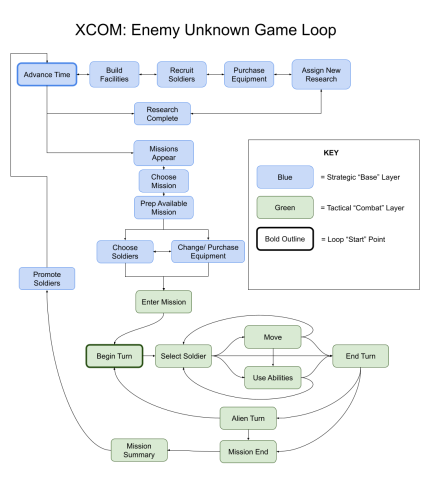As an avid gamer and also an avid analyst, I can’t help but pick apart the video and board games that I play to figure out how they work. One of the more interesting (in my opinion) aspects is in the gameplay “loop”, that is, the series of actions a player goes through before, inevitably, repeating. In Super Mario Bros, the loop is fairly simple:
- Enter Level.
- Explore a level by moving from left-to-right.
- Defeat enemies as applicable, normally by jumping on top of them.
- Collect coins when available.
- “Open” power-up boxes, normally by jumping into them by below, and collect power-ups.
- Avoid hazards such as fire bars or bottomless pits.
- Touch the end-of-level flag.
- Repeat steps 1 through 3 until the castle Level in a world is reached (normally Level 3), then defeat King Koopa either by damage or by touching the Axe icon.
- Your Princess Is In Another Castle
Games are much more complex than this in modern times, so finding that core loop can often be a very tricky activity, and normally involves much more than a straightforward list. Here is my attempt to describe the gameplay loop as a flowchart in Firaxis’s XCOM: Enemy Unknown, using Google Drawing.

A flowchart demonstrating the gameplay loop of XCOM: Enemy Unknown. The loop begins in the "Strategic Base Layer" with "Advance Time", proceeds through base management steps, then, when a mission is available, shifts into a second "Tactical Combat Layer" phase that loops through individual soldier actions, before combat ends and the Strategic Layer begins again.